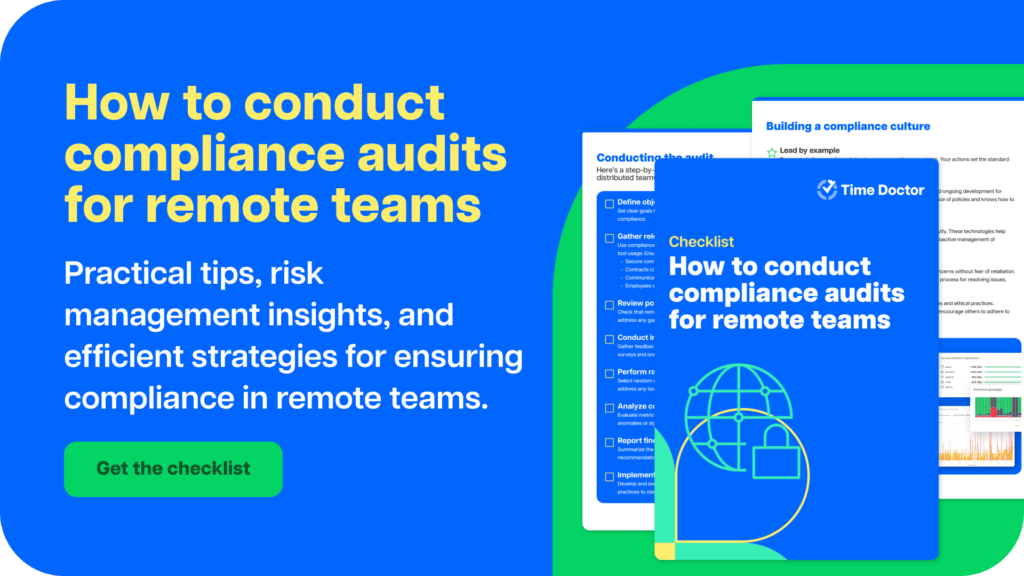Understanding and keeping track of compliance metrics is important to ensure your company stays efficient and in line with the rules.
Compliance metrics give you useful information about your company’s compliance program and help compliance officers, teams, and upper management make choices based on facts. You can monitor compliance efforts, lower compliance risks, and boost total performance if you know and use the right metrics.
Let’s explore the essential aspects of compliance metrics and how to effectively implement them in your organization.

Table of Contents
- The importance of compliance metrics
- Understanding the core elements of compliance metrics
- Building an effective compliance program
- Key compliance metrics to track
- Monitoring and reporting compliance metrics
The importance of compliance metrics
Compliance metrics are quantifiable measurements used to track the performance of a compliance program. These metrics offer a way to evaluate whether the organization’s efforts to meet regulatory requirements are effective.
They also provide critical insights for stakeholders, such as compliance officers, the compliance team, and senior management, helping them identify and mitigate potential risks before they escalate into compliance issues.
By monitoring compliance metrics, organizations can:
- Ensure they are meeting regulatory standards.
- Address areas of non-compliance swiftly.
- Make informed decisions regarding compliance strategies and processes.
With compliance metrics, organizations can assess where they stand and continually improve their compliance processes, making them more efficient and less prone to risk.
Understanding the core elements of compliance metrics
Understanding the fundamental elements of a successful compliance program is crucial to mastering compliance metrics. These include:
Key Performance Indicators (KPIs)
KPIs are certain measurements used to monitor the compliance program’s effectiveness. The amount of non-compliance issues, the response time to incidents, and compliance training completion rates are examples of standard compliance KPIs. However, they can vary according to the industry.
Compliance KPIs vs. Business KPIs
Compliance KPIs monitor the organization’s regulatory compliance, whereas business KPIs concentrate on financial performance. Both KPIs have to line up to guarantee compliance initiatives complement overarching company goals.
Regulatory alignment
Compliance metrics must align with regulatory requirements. This ensures that the organization remains in good standing with regulatory bodies and can avoid fines or penalties related to non-compliance.
By focusing on the right KPIs and aligning them with regulatory requirements, organizations can develop a compliance program that is effective and adaptable to changing regulations.
Building an effective compliance program
Managing compliance metrics successfully starts with an efficient compliance program. The following is how to create a strong compliance program:
- Designing a compliance program: Identify the primary compliance risks to which your business is vulnerable. Next, create protocols that address these risks and ensure that each employee understands their role in maintaining compliance.
- Risk management and assessment: Implementing risk assessment and management plans is a component of an extensive compliance program. Risks must often be assessed to spot new threats that could compromise compliance. As a result, the compliance team can continue to be ahead of possible compliance problems.
- Training programs: Compliance training ensures employees are informed of the following regulations. The deployment of comprehensive compliance training programs ensures that all team members are knowledgeable about regulatory standards and equipped to assist the firm with its compliance efforts.
By combining compliance measurements, risk management, and training, businesses may create a compliance program that meets legal standards and improves overall compliance performance.

Key compliance metrics to track
It’s important to track the right metrics to ensure compliance program effectiveness. Some of the key compliance metrics every organization should monitor include:
Compliance performance indicators
These metrics measure how well the organization is performing in terms of compliance. Common compliance performance indicators include:
- Response time: How quickly compliance issues are addressed
- Completion rates: The percentage of employees who complete compliance training on time
- Mean time to resolution: How long it takes to resolve a compliance issue
Key Risk Indicators (KRIs)
These metrics focus on the level of risk the organization is exposed to and how well it manages that risk. Monitoring KRIs can help organizations detect potential compliance risks before they become full-blown compliance issues.
Regulatory compliance metrics
These are specific metrics related to meeting regulatory requirements. They can include the number of internal audits completed, the number of non-compliance incidents, and the percentage of corrective actions taken.
Tracking these metrics makes sure that the organization’s compliance is at a high level while improving their compliance program’s overall performance.
Monitoring and reporting compliance metrics
Effective monitoring and reporting of the metrics is the next step after determining which ones are appropriate to track. Here’s how to do it:
- Internal audits: To determine the current compliance status of your company, do routine internal audits. Internal audits offer a clear picture of how well the compliance program is performing and adhering to legal standards.
- Automation tools: The compliance team can monitor compliance KPIs more effectively by streamlining compliance management through the use of automation. Real-time tracking of compliance performance via automation solutions provides quick insights into possible hazards.
- Reporting to stakeholders: Senior management, regulatory agencies, and other important stakeholders should get regular reports on compliance indicators. These reports have to be easy to understand, brief, and concentrated on important compliance KPIs and areas that need work.
Organizations may keep ahead of possible compliance concerns and continuously improve their compliance efforts by putting strong monitoring and reporting mechanisms in place.
Conclusion
Your business needs to follow the rules and work well that you use compliance measures. If you know the main parts of compliance measures, make a strong compliance program, and keep an eye on the right KPIs, you can lower compliance risks and boost performance.
Senior managers, compliance officers, and compliance teams are all important for ensuring compliance works. Your company can stay ahead of changes in the law and maintain a high level of compliance excellence by using the right measures and always improving processes.

Liam Martin is a serial entrepreneur, co-founder of Time Doctor, Staff.com, and the Running Remote Conference, and author of the Wall Street Journal bestseller, “Running Remote.” He advocates for remote work and helps businesses optimize their remote teams.


